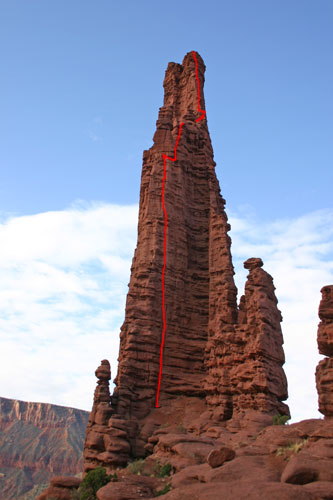As I understand it, spire measure is computed by summing the contributions from all 360 degrees.
In the cases of El Diente and North Maroon, the connecting ridges are thin. So, even though they receive little contribution in the direction of Wilson and Maroon, they make up for this with relatively high steep drops in all other directions.
Likewise, Sopris is not extremely prominent, but has the highest spire measure in Colorado because of the huge drops on the side away from its connecting saddle.
I recall reading that it is not uncommon for the point with the greatest spire measure on a mountain to not be the summit. So, a point with very little prominence can rank high if it is perched out on the edge of a coxcomb with steep drops in almost all directions.
Why the sudden interest, by the way? Thinking of adding a spire section to the various lists?
100 Most Spiry





